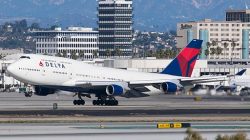This is a continuation of an article started yesterday on the future value of your miles and factors that might be improving the picture after a few years of successive hits and devaluations. To read the first installment click here, otherwise continue below…
Foreign programs will continue to partner with US banks
This one is great for us. As the US issuing banks start to forge more partnerships with foreign frequent flyer programs, the value of those meta-miles goes way up, unlocking award charts that were previously quite inaccessible and allowing for ways to combine miles from different programs into a consolidated airline (Singapore, BA, Virgin Atlantic and Air France come to mind since you could transfer some AMEX points and Chase points into each of them.
This flexibility has great utility because it allows for us to better manage opportunity costs across programs, cherry picking the most optimal redemption off the best chart for the particular routes and products we want to fly. Don’t want to fly UA or pay more to fly another star alliance partner? No problem, transfer to Singapore or Air Canada and book the same flight for less!
More fungible opportunities to use miles
Airlines have been steadily rolling out more opportunities to spend miles, cash+miles, anytime/market price awards, pay with avios type promotions and features, using miles to “unlock” other promotions. Remember loyalty programs are a tool for customer engagement, so the more that airlines can engage customers in ways that they feel they’re getting value out of them, the better.
Most travelers see miles as a rebate, like a coffee house buy-10-get-one free punch card and make redemptions so sub-optimally that it makes many people in our community cringe (you spent 50,000 miles to fly from LA to Vegas!!?) but that increased attention on other avenues for redemption may actually provide more value to most occasional flyers.
More options increases the value of your miles, even if you don’t use all of them. Like redeeming SkyMiles for drinks at a Skyclub.
YOU don’t have to use them, but if other people burn their miles in sub-optimal ways, this helps you as it reduces the pool of miles floating around competing for the same award space. It also takes pressure off of carriers to devalue further when they see the outstanding liability from unredeemed miles swell. Make those accountants happy!
Airlines are giving softer guidance
Several carriers (United, Easyjet and Lufthansa) have recently given investment analysts guidance that the next few quarters will likely see fewer passengers flying and capacity increasing, so fares will continue to be depressed, which means they may loosen their belts again and offer more incentives to get on a plane.
Airfare is also getting cheaper (anyone else see that transatlantic fare war this summer?) I’ve purchased both a $200 and $300 one way to Europe twice this summer with very little advanced planning, so cold hard cash is competing against unlocking my mileage balances.
Why pay 30,000 miles to fly to Europe, when I can just pay $300? This pushes the breakeven point of using your miles higher, both in cost per mile — I can do better than 1ct — and with overall redemption cost — I start to redeem for more flights that I’d never consider paying the sticker price for. With cheap revenue trips available, I’m more likely to just buy coach fares and save my redemptions for the more plum international first and business awards.
This trend of cheap airfare also bodes well for even revenue based redemptions — as the same number of miles now buys more travel. 50,000 Southwest miles may have gotten you 6 flights last year, now it might get you 7.
Business class fares are also getting cheaper – which while it’s a long shot, I’m optimistic that it might affect transfer prices on partner redemptions in the future (say on intracontinental or short haul business class), but that’s pretty speculative.
In this world of devaulations, fuel surcharges are starting to look less onerous
Carriers have been getting a lot of flack on tacking on “fuel surcharges” or “carrier-imposed charges” (YQ) just for the privilege of telling a computer to book a seat and deduct an integer from your account balance.
Thankfully, some airlines like Korean and ANA are starting to reign them in (a bit). So now if it’s a question of paying an extra $200 to save 15,000 miles it’s a less obvious choice. This means a number of foreign programs, namely Singapore, BA, ANA and Lufthansa are also becoming more competitive (not getting better, but this is the new world we live in). I actually paid $300 to fly BA first class (to try it out) and paid $240 in YQ when redeeming on Air Canada to fly a Lufthansa long haul segment that was optimally timed when I had little date flexibility.
I understand some people are allergic to YQ and I’ll probably get some nasty comments for it, but some of the programs that were previously off-limits have now become in the realm of possibility given how much the US carriers have watered down their programs. Time to dust off those foreign award charts!
Shameless plug: I actually built a tool last year that takes into account many carriers’ award charts and tells you the optimal program to use. It’s more for manufactured spenders who place a specific dollar value on each type of mile (you can supply your own rates of acquisition), but it may be useful to readers here. $10 with Promo Code: Travel Codex
Conclusion
Maybe this article is too bubbly or optimistic, but I really appreciate how my redemptions have gotten more creative in ways that they haven’t been before. Less extravagant (well kind of) but far more convenient (last minute tickets, more programs to consider).
So given the cheap fares we’ve been seeing, be a little more judicious about cashing in your miles — using them only for complicated trips than “earn and burn”
I understand that this is probably counter to much of the advice out there, but in this new regime of harder earn, more expensive burns — it pays to expand the range of options in your mileage tool kit to stay ahead of the curve. The new program changes may reward you if you’re patient.
But if you agree with me… Don’t Tell Anyone!
Two caveats:
One, this isn’t really an article on carrier perks or the value of airline elite status — it’s more written with the average traveler in mind that flies maybe one long haul and one or two short haul trips per year and the hoards of MS’ers and travel wonks that are flush with miles because they’ve churned the same 15 cards two to five times each. 🙂
Two, miles are not an investment vehicle. I’m not advocating saving them on the order of years or decades for a dream trip 20 years from now. It’s far too hard to predict changes to programs that far in advance nor should miles be a significant (or any) part of your investment strategy. Stick your money in the S&P 500 instead. But if you’re worried that you should burn them right now because the sky is falling, my suggestion is to wait a bit for trips you actually want to take.
The future may be brighter.






